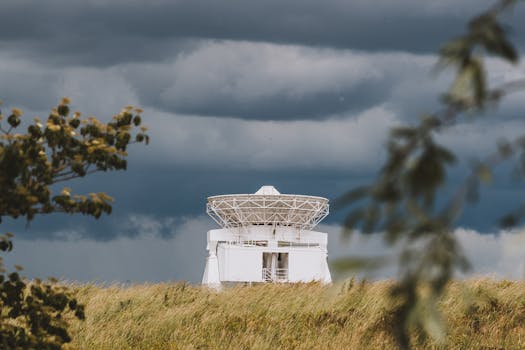GEO Satellites: Revolutionizing Global Communication and Navigation
GEO satellites, or Geostationary Earth Orbit satellites, are a type of satellite that orbits the Earth at an altitude of approximately 36,000 kilometers, remaining stationary over a fixed point on the equator. This unique characteristic allows GEO satellites to provide continuous coverage of a specific region, making them ideal for a variety of applications, including television broadcasting, telecommunications, and weather forecasting.
GEO satellites have been in use for several decades, with the first GEO satellite, Syncom 2, launched in 1963. Since then, the technology has advanced significantly, with modern GEO satellites offering a wide range of services, including high-definition television broadcasting, broadband internet connectivity, and navigation systems. The geostationary orbit of these satellites enables them to maintain a fixed position in the sky, allowing for continuous communication and navigation services.
Applications of GEO Satellites
GEO satellites have a wide range of applications, including television broadcasting, telecommunications, weather forecasting, and navigation. In the field of television broadcasting, GEO satellites are used to transmit high-definition channels to a wide audience, providing entertainment and information to millions of people around the world. The use of Intelsat and Eutelsat satellites for television broadcasting has become increasingly popular in recent years.
In telecommunications, GEO satellites are used to provide broadband internet connectivity to remote and underserved areas, where traditional wired infrastructure is lacking. This has enabled millions of people to access the internet and communicate with others around the world. The O3b Networks is a notable example of a satellite constellation providing broadband internet connectivity to remote areas.
Weather forecasting is another critical application of GEO satellites, with these satellites providing high-resolution images of the Earth’s atmosphere, allowing meteorologists to track weather patterns and predict weather conditions. The National Environmental Satellite, Data, and Information Service (NESDIS) uses GEO satellites to monitor weather patterns and provide critical weather forecasting services.
Benefits of GEO Satellites
The benefits of GEO satellites are numerous, with these satellites providing a wide range of services that are essential for modern life. One of the primary benefits of GEO satellites is their ability to provide continuous coverage of a specific region, making them ideal for applications that require constant communication and navigation.
GEO satellites also offer a high level of reliability, with these satellites designed to operate for extended periods of time, often up to 15 years or more. This makes them a cost-effective solution for a variety of applications, as they can provide continuous service without the need for frequent replacement or maintenance.
Another benefit of GEO satellites is their ability to provide services to remote and underserved areas, where traditional infrastructure is lacking. This has enabled millions of people to access critical services, such as broadband internet connectivity and television broadcasting, which have improved their quality of life and provided new opportunities for economic development.
Challenges and Limitations of GEO Satellites
While GEO satellites offer a wide range of benefits, there are also several challenges and limitations associated with their use. One of the primary challenges is the high cost of launching and operating GEO satellites, which can be prohibitively expensive for many organizations and countries.
Another challenge is the limited availability of orbital slots, which can make it difficult for new satellites to be launched and operated. This has led to a high level of competition for orbital slots, with many organizations and countries vying for access to this limited resource.
Finally, GEO satellites are also subject to a range of technical challenges, including signal interference and satellite failures, which can disrupt critical services and impact the quality of life for millions of people. The International Telecommunication Union (ITU) plays a critical role in regulating the use of GEO satellites and ensuring that they are operated in a safe and responsible manner.
